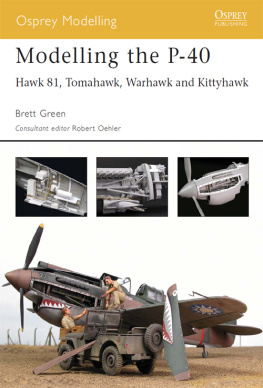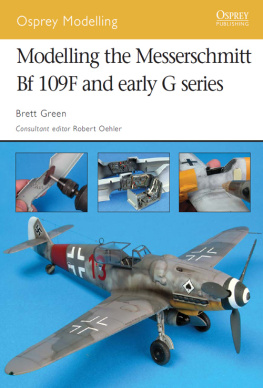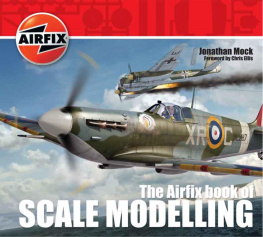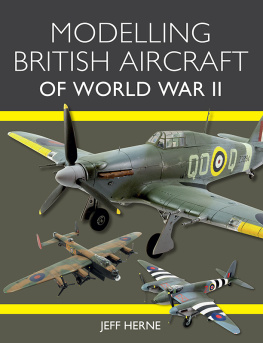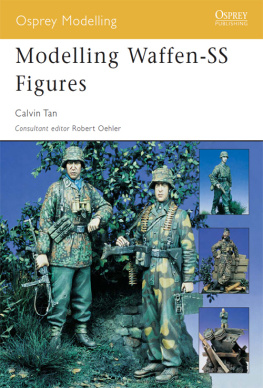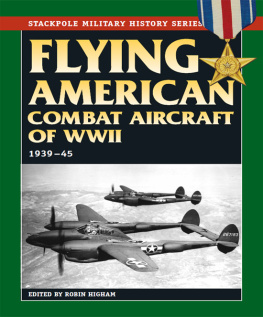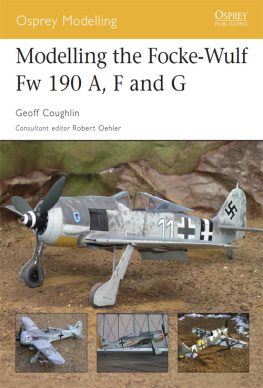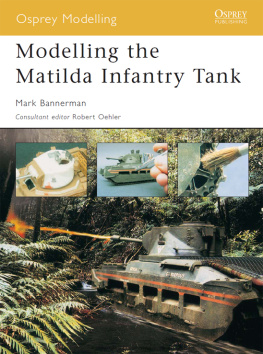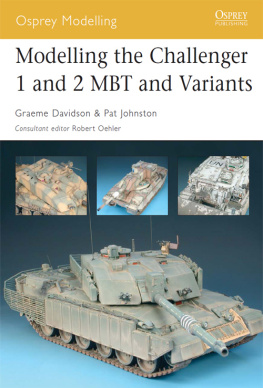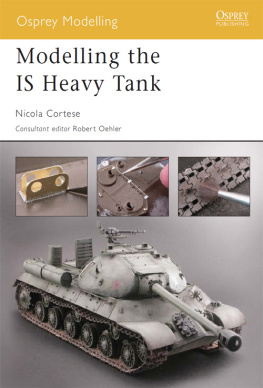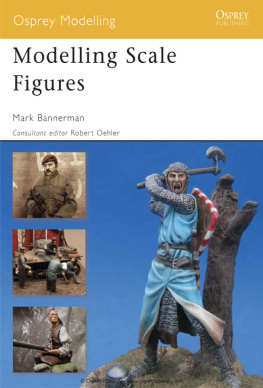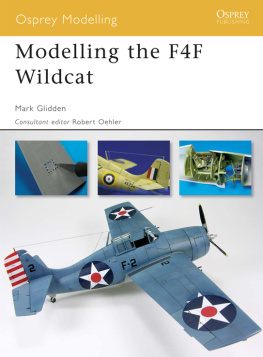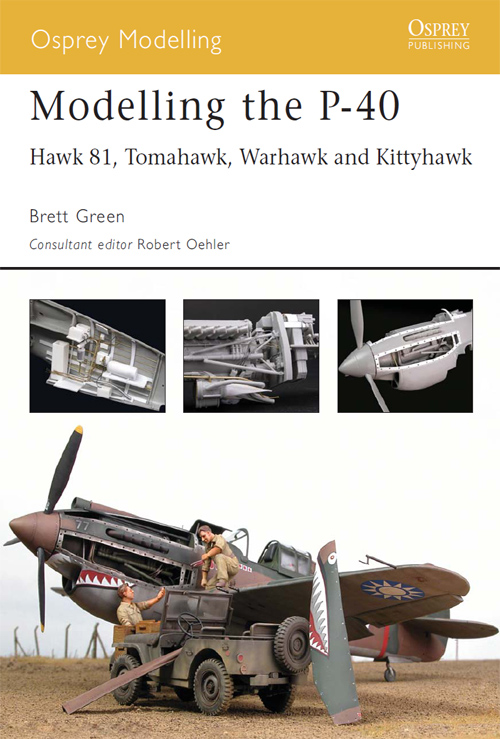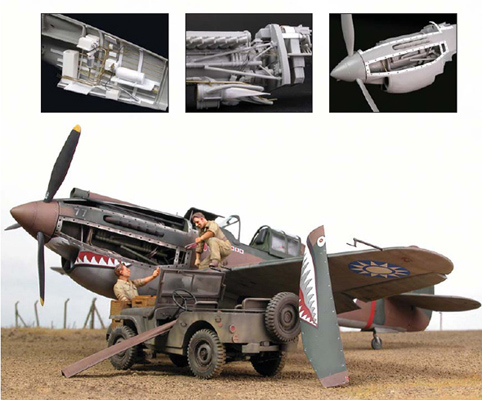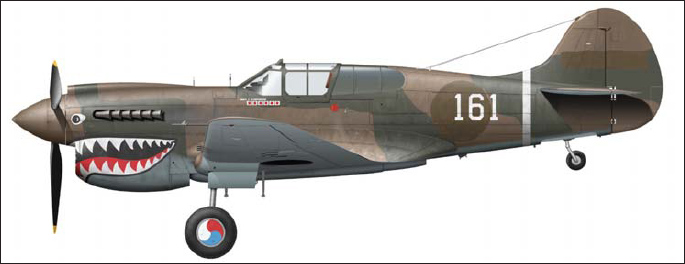| Osprey Modelling 15 |  |
Modelling the P-40
Hawk 81, Tomahawk, Warhawk and Kittyhawk
Brett Green
Consultant editor Robert Oehler
Series editors Marcus Cowper and Nikolai Bogdanovic
Contents
Introduction
The P-40 was a dependable warhorse produced in far greater numbers than any other USAAF fighter during 1941 and 1942, and one that continued to provide valuable service until the closing days of World War II. However, the Warhawk is often overshadowed or even ignored in the annals of aviation history because it did not shine as brightly as its more glamorous counterparts on both sides of the conflict.
The P-40 had its origins in the Curtiss H75 / P-36, a conventional radial engine fighter first produced in 1937. This Curtiss Hawk boasted modern features such as retracting undercarriage, a monococque fuselage, a three-bladed constant speed propeller and hydraulic flaps; but even in the late-1930s its performance was no match for the emerging generation of European fighter aircraft such as the Messerschmitt Bf 109 and the Spitfire.
In 1938, the basic airframe of the P-36 was mated with the in-line Allison V-1710-33 C Series engine. This combination became the Curtiss P-40. The earliest operational variants, the H81, P-40B and P-40C, were used to great effect by the famous Flying Tigers in China; by British and Commonwealth forces against distinguished Luftwaffe fighters over North Africa; and represented the first line of defence for the United States.
During 1941, the P-40 airframe was redesigned to accept the more powerful Allison V-1710-39 F Series engine. The more compact crankcase on this engine resulted in distinctly different nose contours, and a slightly shorter fuselage. This version, the P-40D, was produced in limited numbers and was soon replaced by the similar P-40E. The main difference was an increase of armament to six .50-cal. machine guns in the wings. It might be argued that the P-40E was the most important of all the Warhawk variants. It bore the brunt of grim fighting against Japan in the Far East, South Pacific and Australia/New Guinea during 1942, and formed the backbone of the Desert Air Force in the Middle East.
Hawk 81-A-2 P-8164 flown by Robert J. Sandell, Squadron Leader of the 1st Pursuit Squadron. (Tom Tullis)
P-40K 42-45232 flown by Captain John Hampshire Jr., 75th FS, 23rd FG, spring 1943, China. (Tom Tullis)
Perhaps the greatest asset of the P-40 was its availability in times of desperate need. The performance of the Warhawk always lagged behind other Allied and Axis fighters, in spite of ongoing development. The P-40 was especially deficient at high altitude, but its top speed and climbing performance were also lacking. On a more positive note, the Warhawks pilots appreciated its rugged reliability and ability to absorb punishment. Below 15,000ft the P-40 was capable of tackling enemy fighters on equal terms, and its six .50-cal. machine guns represented heavier armament than that of most other fighter aircraft of the time. The P-40s diving capability was superior to virtually all of its adversaries too, and this could be used to advantage either in attack or in pulling off a fast getaway.
In an effort to improve high-altitude performance, the P-40 was mated to a Packard-built Rolls-Royce Merlin engine. This resulted in a deeper intake chin, a squarer nose profile and the elimination of the long carburetor intake on top of the engine cowl. The Merlin-powered Warhawks were designated P-40F and P-40L. The P-40L also incorporated weight reduction measures, including lighter armour, lower internal fuel capacity and cutting the six .50-cal. machine guns down to four. However, the two missing guns were often refitted in the field. The P-40F and L were both produced in short-fuselage and long-fuselage production batches.
Other developments of the Warhawk included the P-40K, which was fitted with a large fillet in front of the fin. Later production models of the P-40K introduced a longer fuselage, extended at the empennage, which was to become a characteristic of all subsequent Allison-powered variants. The only external difference between a late P-40K and the next Allison variant, the P-40M, was a perforated carburetor bypass panel in front of the exhausts.
The next development, the P-40N, was intended to deliver a faster, lightweight Warhawk. During initial production, armament was once again reduced to four guns, wing racks were deleted, fuel and ammunition capacity was reduced and lightweight materials were used in construction. Smaller, spoked alloy wheels were also fitted to the P-40N. Despite these extensive changes, the main identifying factors between an initial-production P-40N and the earlier P-40M was the style of wheel and the four wing guns.
An improved canopy was fitted from the P-40N-5-CU production block. The new design consisted of a clear Perspex arch replacing a large section of the fuselage spine behind the canopy. The fuselage fuel tank cover was angled back to permit maximum visibility through the new glazing. Internal frames of the sliding canopy section were deleted to further improve the view. A new style of pilots seat with a squared-off top was also installed at this time. From the P-40N-15-CU production block, the six .50-cal. machine guns and bomb shackles were reintroduced along with a bigger internal fuel capacity than any earlier Warhawk. The P-40N-20-CU saw the last major changes, with the installation of a 1,360hp Allison V-1710-99 engine, wing racks for 500 lb bombs and a capacity for up to 450 gallons of fuel in external tanks.
The P-40 might not have received the same recognition as the Mustang, Lightning or Thunderbolt, but it continued to provide reliable service alongside its more glamorous cousins in the Pacific and the Mediterranean until the end of World War II.
Table 1: P-40 Production Variants and Characteristics
| USAAF/Curtiss designation | RAF designation | Comments |
| Allison V-1710-33 C Series engine |
| P-40-CU | Two .50-cal. guns in the nose; two .30-cal. wing guns. |
| H81-A1 | Tomahawk Mk.Ia and Mk.Ib | Armament increased to two .50-cal. cowl guns and four .30-cal. guns. |
| H81-A2 | Tomahawk Mk.II and Mk.IIa | Armament standardised as two .50-cal. cowling guns and four .30-cal. wing guns. Tomahawks fitted with .303 guns instead of .30-cal. Additional armour. |
| P-40B / H81-B | Tomahawk Mk.IIb | Provision for centreline fuel tank or 500 lb bomb. |
| P-40C / H81-A2 / H81-A3 |
| Allison V-1710 F Series engine |
| P-40D / H87-A2 | Kittyhawk Mk.I | Redesigned nose for Allison V-1170-39 F-series engine. Nose guns deleted and four .50-cal. machine guns mounted in wings. |

